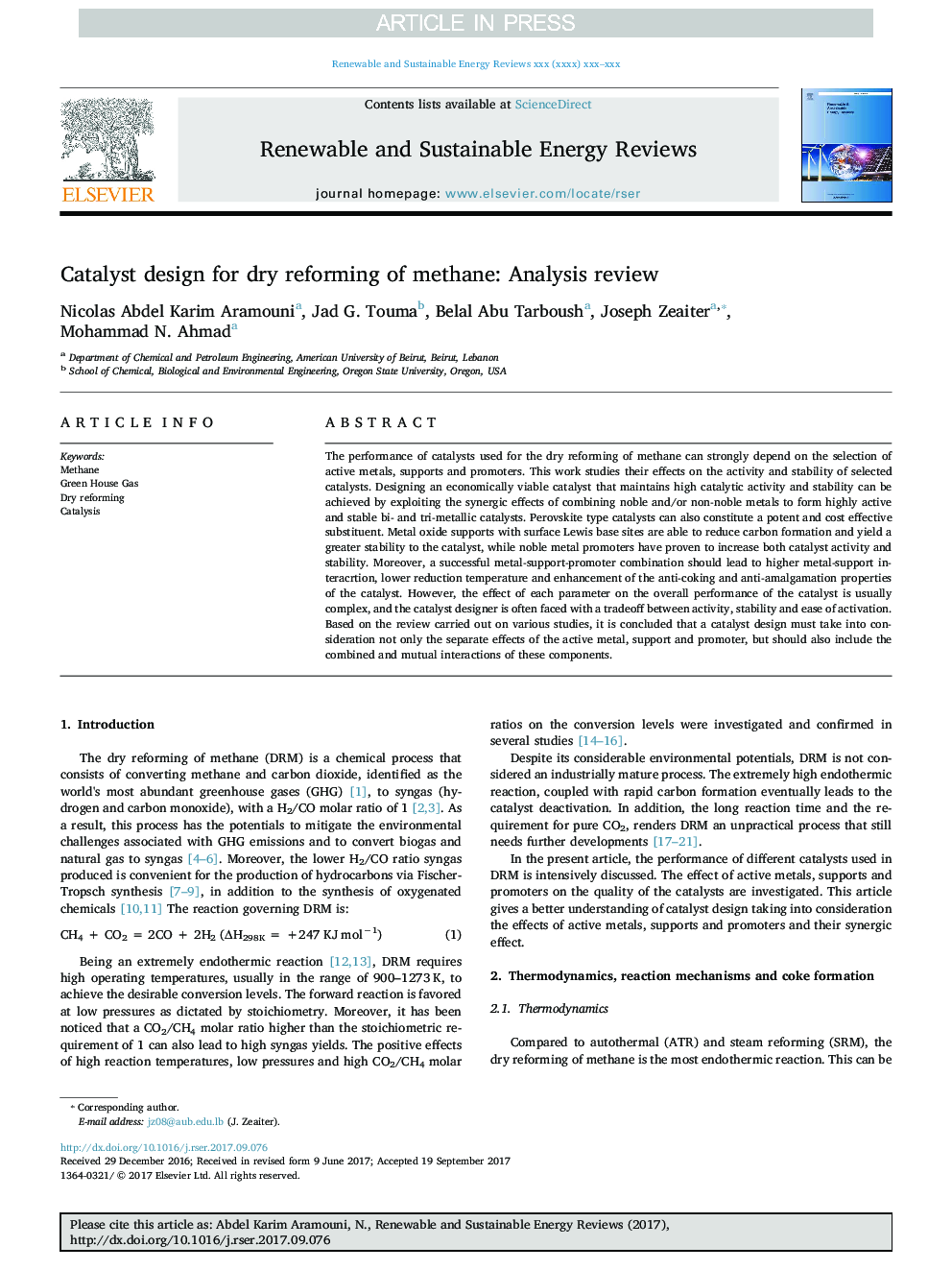| Article ID | Journal | Published Year | Pages | File Type |
|---|---|---|---|---|
| 8111863 | Renewable and Sustainable Energy Reviews | 2018 | 16 Pages |
Abstract
The performance of catalysts used for the dry reforming of methane can strongly depend on the selection of active metals, supports and promoters. This work studies their effects on the activity and stability of selected catalysts. Designing an economically viable catalyst that maintains high catalytic activity and stability can be achieved by exploiting the synergic effects of combining noble and/or non-noble metals to form highly active and stable bi- and tri-metallic catalysts. Perovskite type catalysts can also constitute a potent and cost effective substituent. Metal oxide supports with surface Lewis base sites are able to reduce carbon formation and yield a greater stability to the catalyst, while noble metal promoters have proven to increase both catalyst activity and stability. Moreover, a successful metal-support-promoter combination should lead to higher metal-support interacrtion, lower reduction temperature and enhancement of the anti-coking and anti-amalgamation properties of the catalyst. However, the effect of each parameter on the overall performance of the catalyst is usually complex, and the catalyst designer is often faced with a tradeoff between activity, stability and ease of activation. Based on the review carried out on various studies, it is concluded that a catalyst design must take into consideration not only the separate effects of the active metal, support and promoter, but should also include the combined and mutual interactions of these components.
Related Topics
Physical Sciences and Engineering
Energy
Renewable Energy, Sustainability and the Environment
Authors
Nicolas Abdel Karim Aramouni, Jad G. Touma, Belal Abu Tarboush, Joseph Zeaiter, Mohammad N. Ahmad,
